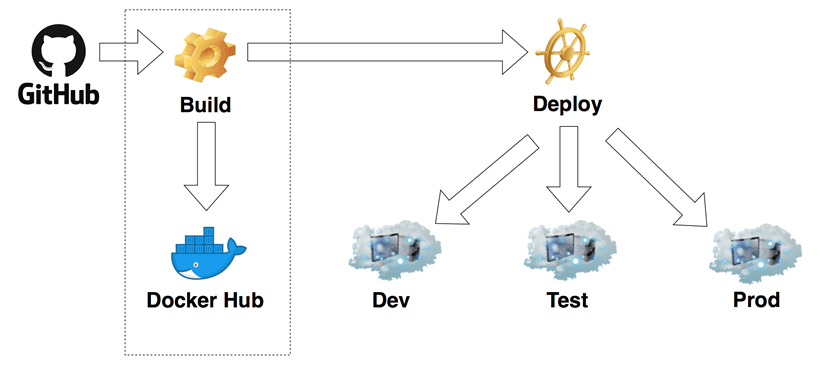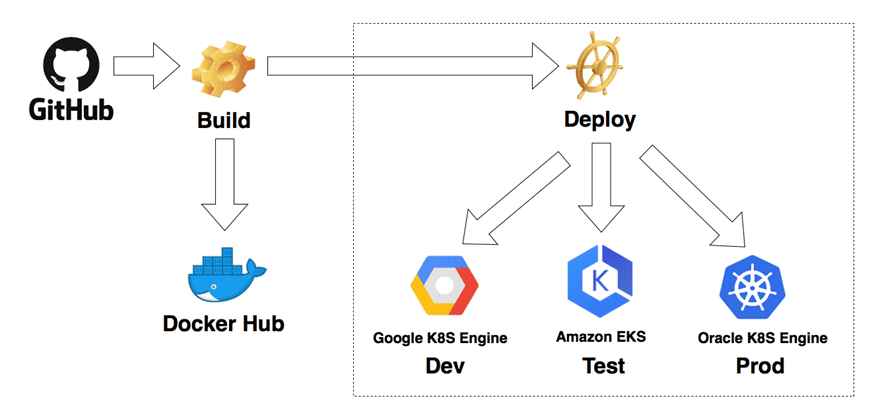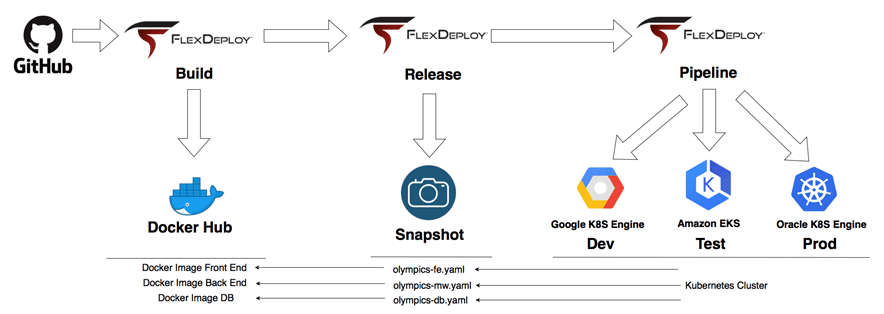The following is a summary of the information covered in the webinar: FlexDeploy for Cloud Native Apps and Containers. You can watch the recording here.
Using FlexDeploy to Simplify Processes
FlexDeploy is an enterprise-grade platform for DevOps, CI/CD, and release automation. With FlexDeploy you can integrate your toolchain from end to end – from planning, to automating builds with the out-of-the-box CI server and artifact repository, and all the way through to automating deployments.
You can use traditional database, middleware, and applications, or modern technology, such as cloud native apps and containerization.
The goal is to simplify your software development and delivery processes.
If you are building cloud native apps and deploying them using containers, FlexDeploy works to make your developers highly productive. Developers should be working on the application and solving problems, not troubleshooting and babysitting the machinery.
Let FlexDeploy package up changes and deploy them across environments.
By automating this process, you can be more effective, improving your speed, quality, and associated costs.
A Development Lifecycle with Cloud Native Applications and Containers
Building cloud native applications and delivering them via containers can look something like this:

There are a number of moving parts that have to be managed and controlled. For example, you must commit your changes to a source control system like GitLab. By automating the build process, you can create the Docker image automatically and it in a docker repository without manual intervention.
That artifact is then ready to be deployed through any number of environments. Next, you rapidly test and move the change through to Production.
That is a simplified view of the development lifecycle with cloud native apps and containers, and seems straightforward on this level.
The challenge comes with managing these moving parts at scale. There can be many more moving parts: tens, thousands, or even tens of thousands in larger organizations.
In many cases, it is not only cloud native applications being deployed using containers. There are more tools at play, such as more traditional (i.e., legacy) technologies.
This can be further complicated when changes are deployed and run to various locations such as Google, Amazon, and Oracle. You need the flexibility to decide where to deploy.

Release Pipelines with Containers
The bottom line? Things need to work and they need to work everywhere.
Cloud, containers, microservices, etc. can be complex. Managing these moving parts is critical to ensure you know what is happening in your software development lifecycle and to guarantee you can quickly identify and resolve any issues.
By using FlexDeploy, organizations establish an automated and repeatable process for building, packaging, and safely deploying code, APIs, meta-data changes, and data migrations from development through test to production environments.
FlexDeploy allows you to take and abstract that complexity by creating release pipelines with containers and other technology. You can automate the build and deploy process, meaning you can create the artifact/image in a fully automated fashion, drive the deployment of those changes, and create snapshots of the artifacts and deploy them across the pipeline in a fully automated way.

The pipeline manages the process and puts the appropriate governance and controls in place so you can make changes rapidly without sacrificing quality.
Take Advantage of Deployment Strategies
Deployment strategies exist to introduce changes faster, eliminate downtime, and manage the risks associated with making changes. There are a variety of deployment strategies, including Blue Green, A/B, and Canary. Deployment strategies work in concert with the heavy automation of build, deploy, and release process so you can make changes faster and more effectively.
FlexDeploy makes it simple and easy to make these changes and utilize various strategies. Not only can you build cloud native applications rapidly and deploy them using containerization, but you can also introduce different deployment strategies.
Explore DevOps for Cloud Native Applications and Containers
In this short 30-minute webinar, Dan Goerdt, President of Flexagon, walks through a demonstration of FlexDeploy. He shows how you can use this DevOps platform to build cloud native applications and deploy them using containerization.
Watch the recording today!

Want to keep learning? Check out other on-demand and upcoming webinars.



